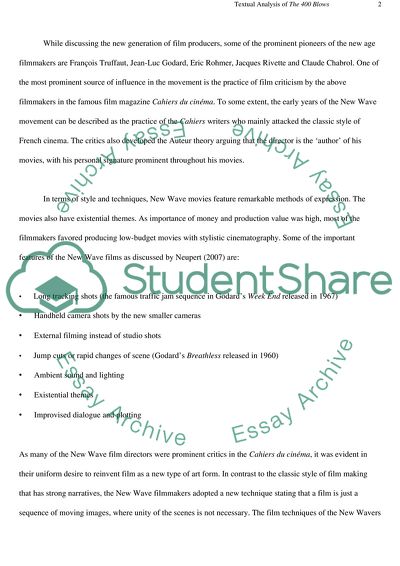Cite this document
(Textual Analysis of The 400 Blows: The Landmark of New Wave Movie Review, n.d.)
Textual Analysis of The 400 Blows: The Landmark of New Wave Movie Review. https://studentshare.org/visual-arts-film-studies/1731089-a-textual-analysis-of-the-400-blows-a-french-new-wave-film
Textual Analysis of The 400 Blows: The Landmark of New Wave Movie Review. https://studentshare.org/visual-arts-film-studies/1731089-a-textual-analysis-of-the-400-blows-a-french-new-wave-film
(Textual Analysis of The 400 Blows: The Landmark of New Wave Movie Review)
Textual Analysis of The 400 Blows: The Landmark of New Wave Movie Review. https://studentshare.org/visual-arts-film-studies/1731089-a-textual-analysis-of-the-400-blows-a-french-new-wave-film.
Textual Analysis of The 400 Blows: The Landmark of New Wave Movie Review. https://studentshare.org/visual-arts-film-studies/1731089-a-textual-analysis-of-the-400-blows-a-french-new-wave-film.
“Textual Analysis of The 400 Blows: The Landmark of New Wave Movie Review”. https://studentshare.org/visual-arts-film-studies/1731089-a-textual-analysis-of-the-400-blows-a-french-new-wave-film.


